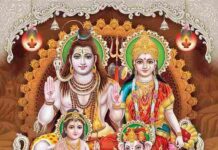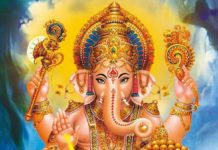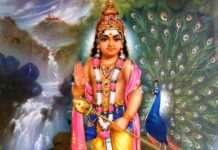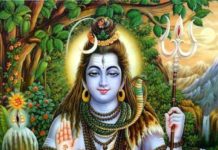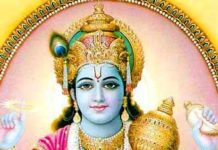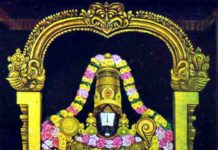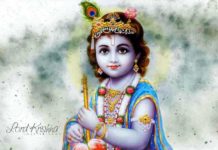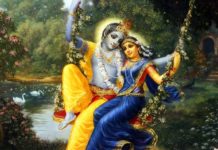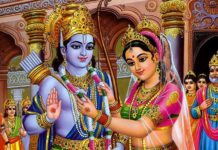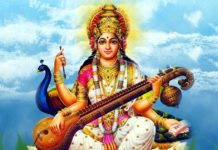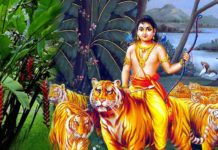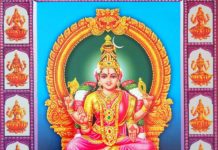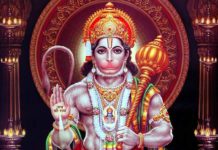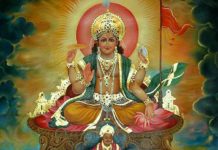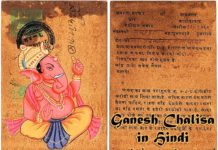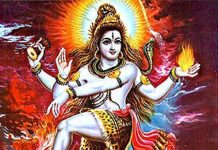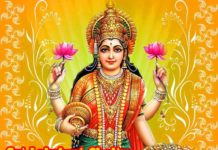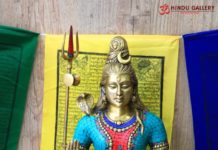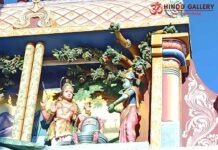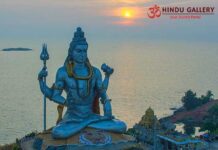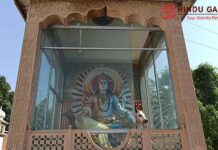Lakhamandal Shiv Mandir is located at Lakhamandal, a mountain village situated nearly 50 kilometers on the way to Yamunothri. This temple is one of the innumerable Shiv temples in Garhwal region of Uttrakhand which is called as Dev Bhumi.
“Lakha’’ means the red color inflammable adhesive. As per the legend, Duryodhana had built a dwelling place made of Lakha for Pandavas to reside. However, due to divine intervention, the Pandavas had escaped the building when Duryodhana set it on fire.
It is believed that after the end of Mahabharatha war, the Pandavas had built various Shiv temples across Bharath to alleviate their Bramha-hathya dosh.
As per belief, Lakhamandal Shiv temple was built on the land where the lakha building of Pandavas was situated. The exact details of the origin of the temple could not be ascertained.
However, there are several idols of various deities kept together alongwith a number of Shiv-Lings. It can be understood that long back there was a super structure housing a lot of temples in the premises.
The entire structure of the temple appears to be constructed of slate-like material. The entrance to the temple is in the village road.

From there, a winding path takes us near the temple.

There are two options to reach the temple. Either the stairs are to be mounted or a circuitous elevated path has to be taken to reach the sanctum.

After mounting the steps, we come across the main sanctum.

Just in-front of the main sanctum, there are two stone mandaps to the left as well as the right side.

Two Nandi idols are in the front.

The main sanctum is in a stone mandap. After negotiating a few stone steps, we reach the small door of the main sanctum. Once we enter into it, we are blessed with the darshan of a small Shiv-ling. Around the Shiv-Ling, there are vigrahas of Sri Ganesh, Bhagwan Shiva’s family with Sri Parvathi, Sri Ganesh and Sri Subramanya, Bhagwan Ram and Sri Sita, Bhagwan Krishna and Sri Radha and other Deities.
On having had the darshan, we commence our parikrama of the temple. We come out of the main sanctum and turn to our right side.

There, we can sight various Shiv-Lings of various sizes and colors. It is believed that each of the Shiv-Lings pertain to separate Yuga.

In the parikrama path, there are holes in each square. The Priest had explained that there was a small Shiv-Ling in the middle of each square and that they were removed lest they might be treading to the devotees. Hence, they were said to be removed.


We can see sculptures of various Deities adorning the outer wall of the main sanctum.



After crossing the backside of the main sanctum, we come across an elevation of stones. There are statues of two warriors. It is believed that these are the idols of Arjun and Bheem.

Inside the elevation, we are blessed with the sight of a huge Shiv-Ling on a pedestal made of stones.

To reach Shiv-Ling, we have to go crisscross on the stones. The Shiv-Ling is magnificent. It is said to be made of graphite. If we do abhishekam with the water kindly provided by the priest, the Shiv-Ling turns glossy and resplendent.

The nature of the stone and the divinity cause this phenomenon. It has to be seen and experienced to be believed.
The perambulation of this Shiv-Ling has to be done anti-clock wise. The priest had said that the main sanctum was facing east and that the outer Shiv-Ling was facing west. Hence the parikrama of this Shiv-Ling had to be done anti-clock wise.
After coming down from the Shiv-Ling, we come back to the outer wall of the main sanctum. Here we can sight the sculptures of Sri Durga Devi and other Deities.
On completing of the perambulation, we can see the snow-peaked mountains of Himalayas at a distance.

Between mountains, a pathway is visible. It is believed to be the entrance to the Swarg Log, heaven.

On returning from the Mandir, we can see the cave in which the Pandavas had hidden after escaping from the fire set by Duryodhan.

The cave is also worshipped as temple. Some Deities are placed in the cave as well for prayer.
In effect, the Lakhamandal Shiv Mandir is full of serenity, divinity and full of positive energy. The place is quite ideal for meditation and for acquiring peace of mind. The water available at the temple premises is called as Kedar Ganga.
The priests of the temple are very nice, pious, humble and simple persons. We are also asked to offer our prayers in the direction in which the Kedar Dham temple is situated.
From Dehradun, Lakhamandal can be reached by booking cab. For travel by bus, one has to reach either Mussoorie or Vikas Nagar or Chakrata and catch a bus from there. The frequency of the buses cannot be ascertained.
From the base of Mussoorie to Lakhamandal, we travel with river Yamuna all the way.

The winding river, imposing mountains and the enchanting valley are mesmerizing. We can also see some waterfalls along the way.

In fact, the corners of every alternate turn spout water and all the waters gather at Yamuna.
Om Nama Shivaya Namah!!!





